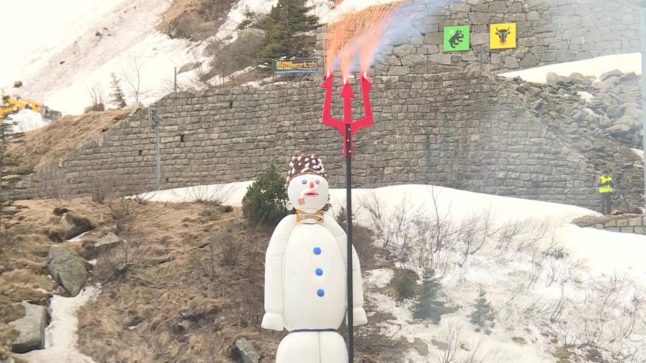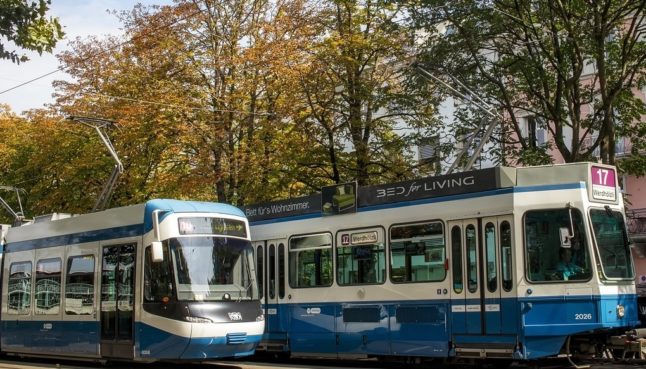What’s in a name?
The Sechseläuten roughly translates to ‘the six o’clock ringing of the bells’ and the first written mention of Zurich’s famous spring festival dates back to 1525, though it was not yet celebrated in those days. At the time, the ringing of the bell at six o’clock indicated the end of the working day in the spring and summer. In the winter, work was considered over when dusk set in.
Where does it originate?
Sechseläuten has its roots in the 14th century when Zurich was home to some 25 guilds (Zünfte), or so-called associations for various professions. Eventually, with Zurich’s expansion in the 19th century, new guilds were formed which incorporated once independent villages and by this time the older unions had all but lost their political power and were no longer associated with a single trade. Still, they soldiered on as private associations with 12 contemporary guilds surviving to this day.
The Sechseläuten itself came to life in the early 19th century when the guilds marked the occasion with a feast, theatrical performances, and visits to other guilds – some of which took place in costume. In 1837, the Sechseläuten then held its very first carnival-themed parade and the festival as we know it today was born.
#Throwback to 2017 when @HappyLilly_ 🇨🇭🐄 was at the #Sechseläuten in #Zurich.
The tradition includes the burning of a figure called #Böögg. The faster his firework-filled head explodes, the finer the summer will be. ⛄🔥💥🌞
How long will it take for it to explode this year? pic.twitter.com/7lcMVtiFMT
— House of Switzerland (@HofSwitzerland) April 25, 2022
When does it take place?
The event usually takes place on the third Monday of April and officially opens on the Friday before at 5 pm in the Lindenhof. Every year since 1991 – on the occasion of the 700th anniversary of the Confederation – the central committee of Zurich’s guilds has invited a different canton to be a guest at its Sechseläuten celebrations.
This year, the canton of Schwyz will be a guest for the second time after 2003 and will organise a vast entertainment programme, not limited to an exhibition and culinary specialties. The guest canton is then invited to take part in the children’s parade as well as the parade of the guilds to the fire with their own delegation and traditional parade motifs and costumes. In 2023 the event takes place on April 17th.
In 2020 and 2021, the Sechseläuten parade was cancelled for the first time in nearly 100 years as a result of the Covid-19 pandemic, making its comeback last year on April 25th 2022.
What happens on the day?
The first parade of the Sechseläuten – the children’s parade – begins at 2.30 pm on the Sunday prior to the main event. Traditionally, the children of the guild members and the school children of the city of Zurich and the neighbouring communities are invited to partake in the procession. Nevertheless, it is commonly understood that all children and young people between the ages of five and 15 are welcome to join in – so long as they don historical costumes in the style of the Middle Ages, the Renaissance, or the Belle Epoque.
Around 3,000 children and 800 musicians take part in the Sechseläuten every year, making the spring festival one of the city’s largest children’s events.
The main event kicks off on Monday at 7 am with 21 gun salutes and at 11am the Zung zur Weggen, one of the guilds, throws small bread rolls out of the windows on the Grossmünsterplatz which are then caught by hungry onlookers.
If you’re not an early riser and managed to sleep through the gun salutes, don’t panic. The best part the festivities takes places from 3pm when the procession, which features music, horses, and various – wagons and lasts two and a half hours – marches off toward the Böögg.
But what is the Böögg?
The main feature of the festival is the burning of the Böögg – a snowman effigy that symbolises winter, and whose name could be related to the word bogeyman. This is a longstanding Zurich tradition to which the guilds invite prominent guests from all over Switzerland every year.
This snowman was packed with fireworks and lit on fire as part of Zurich's Sechseläuten festival, marking the end of winter and the coming of spring. Legend says the quicker the snowman's head explodes, the sooner spring will arrive. This year it took a speedy 13 minutes ☃️💥 pic.twitter.com/3lFuteES3y
— NowThis (@nowthisnews) April 20, 2021
Years ago many Bööggs were burnt on bonfires throughout the city to banish winter and usher in spring. In the 19th century that tradition was combined with the Sechseläuten and the burning of one giant Böögg became the festival’s climax. It takes place at 6pm on the dot.
Is the Sechseläuten a public holiday?
The short answer is, no. The Sechseläuten, though immensely popular, is in fact not a statutory public holiday but rather a local non-statutory one – just like the Knabenschiessen and Berchtoldstag. This means that a right to a paid (half) day off is only granted to employees if their employment contract states so. However, many Swiss enjoy the festivities so much they happily sacrifice some of their annual leave to take part.



 Please whitelist us to continue reading.
Please whitelist us to continue reading.
Member comments